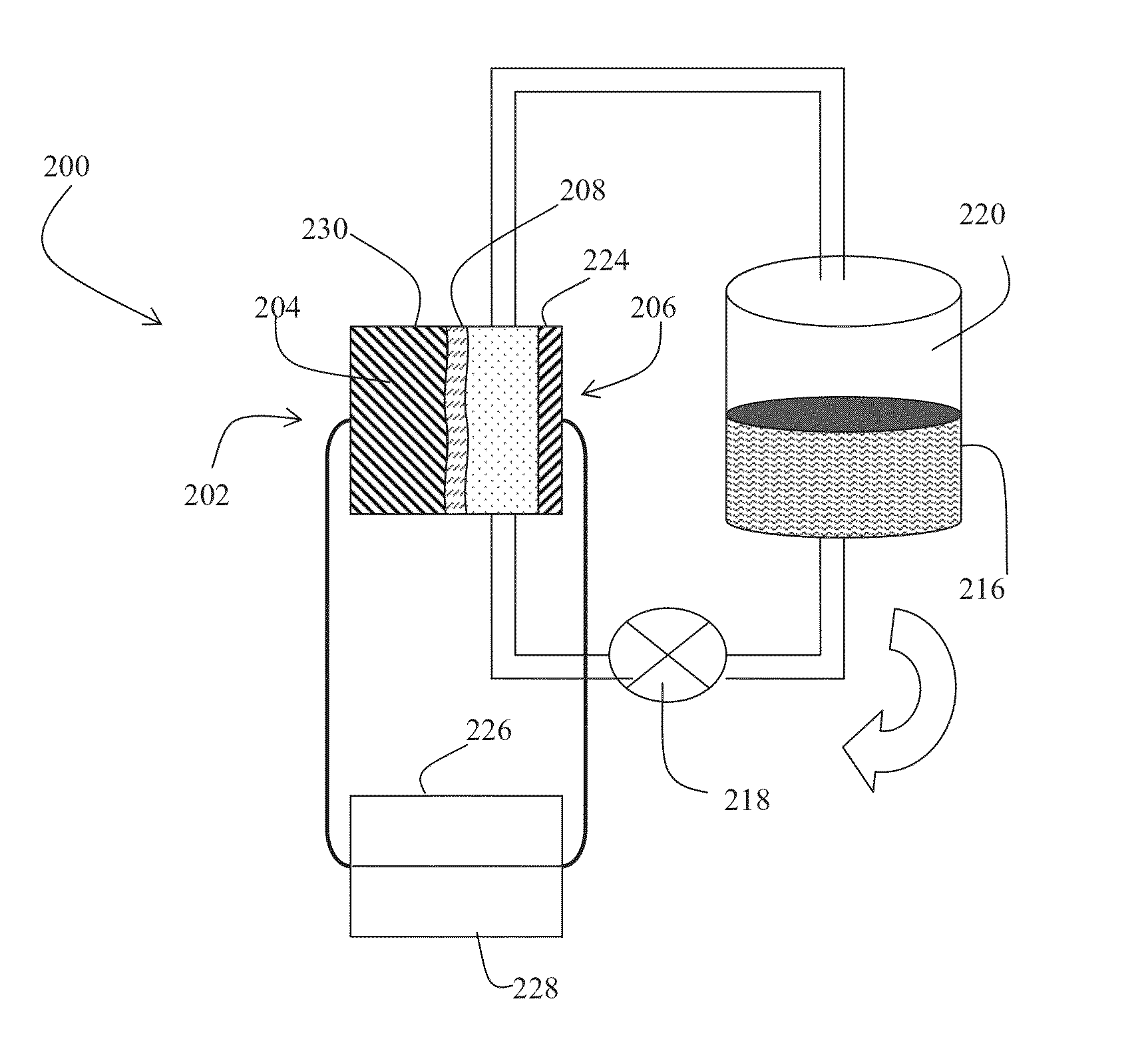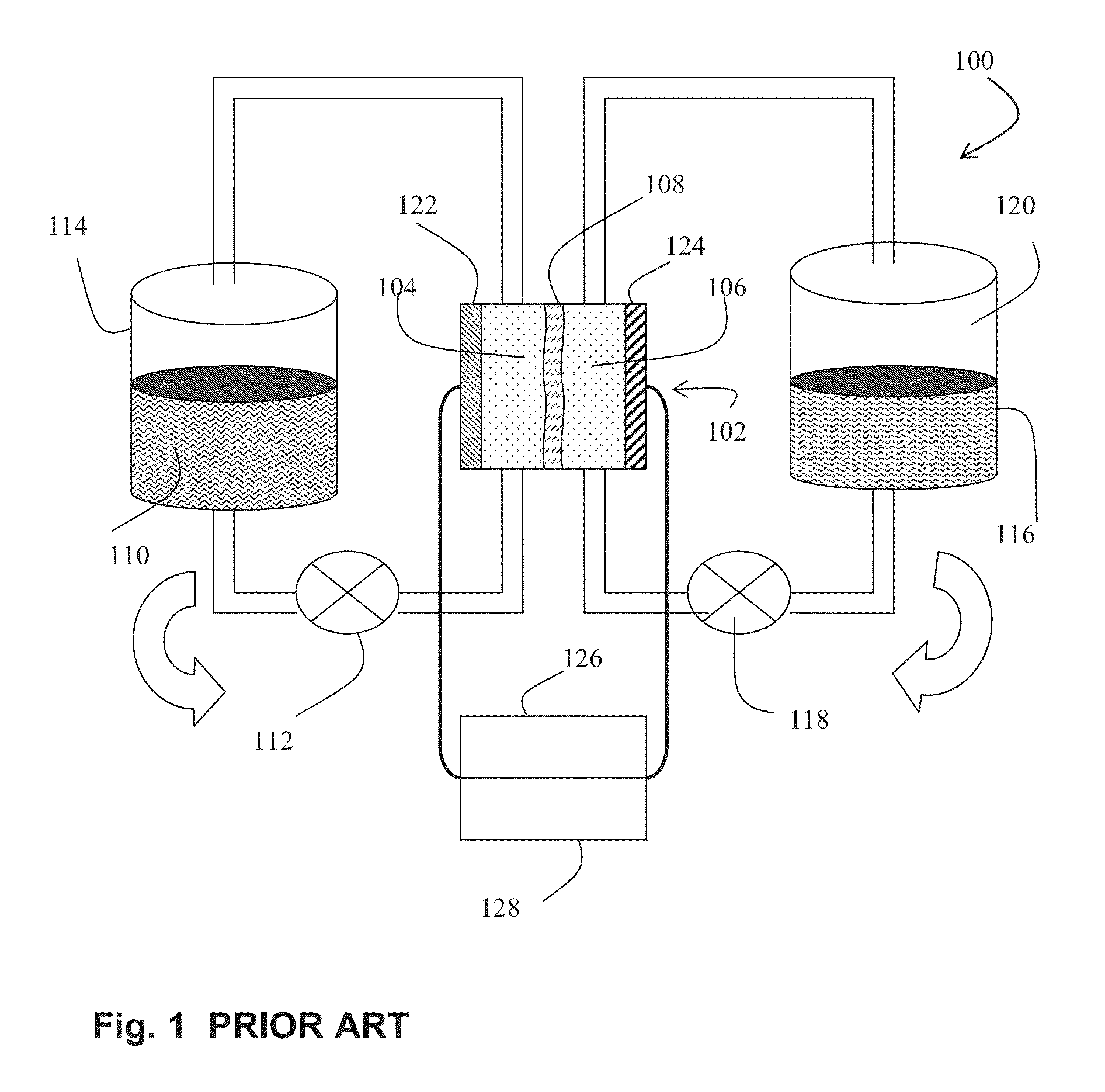Novel flow battery and usage thereof
a flow battery and flow technology, applied in the field of flow batteries, can solve the problems of limited cycle life, poor energy efficiency, limited energy of hybrid flow batteries, etc., and achieve the effect of preventing free access to ferricyanide and facilitating the redox process of conversion
- Summary
- Abstract
- Description
- Claims
- Application Information
AI Technical Summary
Benefits of technology
Problems solved by technology
Method used
Image
Examples
Embodiment Construction
[0043]With reference to FIG. 1, a flow cell 100 of the prior art is shown. Flow cell 100 consists of a voltaic battery cell 102 having two half cells 104, 106 separated by an ion selective membrane 108. A first half cell 104 contains a first electrolyte solution 110 that is pumped via a pump 112 from a reservoir, or first electrolyte tank 114. A second half cell 106 contains a second electrolyte solution 116 that is pumped via a pump 118 from a second electrolyte tank 120. An anode 122 is in electrical contact to the first half cell 104, and a cathode 124 is in electrical contact with the second half cell 106. On discharge, the first electrolyte 110 is pumped from first electrolyte tank 114 by pump 112 to the first half cell 104 where electrons are stripped from, for example, metal ions (cations) of the electrolyte 110 and the valency of the cations increases. In the second half cell 106, electrons are added to, for example, metal ions, and their valency decreases. There is a net vo...
PUM
| Property | Measurement | Unit |
|---|---|---|
| voltages | aaaaa | aaaaa |
| structure | aaaaa | aaaaa |
| flexible | aaaaa | aaaaa |
Abstract
Description
Claims
Application Information
 Login to View More
Login to View More - R&D
- Intellectual Property
- Life Sciences
- Materials
- Tech Scout
- Unparalleled Data Quality
- Higher Quality Content
- 60% Fewer Hallucinations
Browse by: Latest US Patents, China's latest patents, Technical Efficacy Thesaurus, Application Domain, Technology Topic, Popular Technical Reports.
© 2025 PatSnap. All rights reserved.Legal|Privacy policy|Modern Slavery Act Transparency Statement|Sitemap|About US| Contact US: help@patsnap.com



